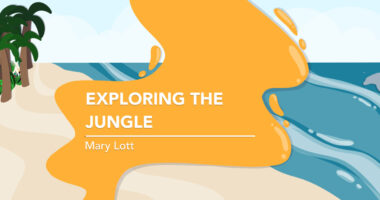‘PACE’ yourself: How a CAD patient reclaims rest and repose
A columnist applies the principle of carpe diem to life with CAD

Inhaling deeply, I took in the clearness of the June morning. The zoysia grass in our front yard was thick and green and luscious, like a deep-pile carpet. Off in the distance, I could hear a hawk squawking at its mate. Some magnolia blossoms were on low-hanging branches nearby, and the air was a redolent mixture of them, honeysuckle, and gardenia. Looking up into the clear, deep-blue sky, I was sure I could see forever.
I had a lot to do that day. But this experience was so glorious, I had to linger for a while. Nothing was as important as appreciating nature. I always have responsibilities, but a day like this one doesn’t come along often.
Seize the day
“Carpe diem” is a Latin phrase meaning “seize the day.” It originates from the ancient Roman poet Horace, writing in his work “Odes” (Book 1, Ode 11). The idea is to fully grasp what is being experienced in the present. I think it’s a good concept for those of us with cold agglutinin disease (CAD) to embrace.
CAD is a rare, autoimmune, hemolytic anemia. Putting it succinctly, when exposed to cold temperatures, my red blood cells clump together and fall apart. CAD is also a “hidden” disease, meaning that its symptoms are numerous and varied and often lead medical teams to incorrect diagnoses before they stumble upon CAD as a possibility. A good example of that is my current labored breathing and chest pains. Is it CAD or a heart problem?
This ambiguity is stressful, so I look for ways to relieve the stress. Lying on the grass and appreciating the different aspects of that experience is one way to alleviate it. I didn’t care that I was doing what Horace advised: seizing the day. I just like the pure relaxing pleasure of the moment. Another word for what I was doing is “mindfulness.”
Mindfulness has come to my attention quite frequently lately. It’s “a type of meditation in which you focus on being intensely aware of what you’re sensing and feeling in the moment, without interpretation or judgment,” as the Mayo Clinic explains. I was especially thrilled to see that the Cold Agglutinin Disease Foundation started its 2025 webinar series with a discussion of mindfulness by Mary Linda McBride, a qualified teacher of mindfulness-based stress reduction.
McBride had some advice for “CADdies,” as those of us with CAD call ourselves. We need to “PACE” ourselves. She explains:
Pacing our mindfulness
The “P” stands for pause and breath regulation. As needed, we should pause our activities in life. Later in McBride’s presentation, she provides detailed instructions on how to regulate our breathing.
I tried it last week when our oldest boy was extremely late returning home after school. My stress level zoomed up to the stratosphere as my husband looked for the kid and I marshaled a posse of friends to help. But regulating my breathing didn’t work this time, and I ended up coughing every time I tried it.
I moved on to “A,” for attention regulation. McBride begins that section of the talk by discussing multitasking and how it encourages attention-deficit/hyperactivity disorder. I fully agree with what she said: that when our minds wander, we should gently but firmly move our thoughts back to our original subject.
Self-compassion is the “C” in the acronym. By that, McBride means we should treat ourselves as we would our close friends by thinking affirming thoughts. Repeatedly going down a path, either with good thoughts or negative ones, makes that path more firm. As Donald Hebb, a neuropsychologist, said in other words in 1949, “Neurons that fire together wire together.”
Things we enjoy
As we train our brains to think along positive paths and practice mindfulness, we reap multiple benefits. Our stress levels become lowered, as well as our blood pressure. We gain a more positive outlook on life. In short, we have more enjoyment — “E” — of the things we do.
One of my favorite mindful things here is to ride my motorcycle to a particular west-facing ridge. Arriving about 20 minutes before sundown, I can enjoy a glorious panorama of burnt-orange clouds against a deep-blue sky that resolves to a quiet, velvety navy. My mom told me that there is always time to enjoy a sunset. In that, she was right.
Note: Cold Agglutinin Disease News is strictly a news and information website about the disease. It does not provide medical advice, diagnosis, or treatment. This content is not intended to be a substitute for professional medical advice, diagnosis, or treatment. Always seek the advice of your physician or other qualified health provider with any questions you may have regarding a medical condition. Never disregard professional medical advice or delay in seeking it because of something you have read on this website. The opinions expressed in this column are not those of Cold Agglutinin Disease News or its parent company, Bionews, and are intended to spark discussion about issues pertaining to cold agglutinin disease.







Leave a comment
Fill in the required fields to post. Your email address will not be published.